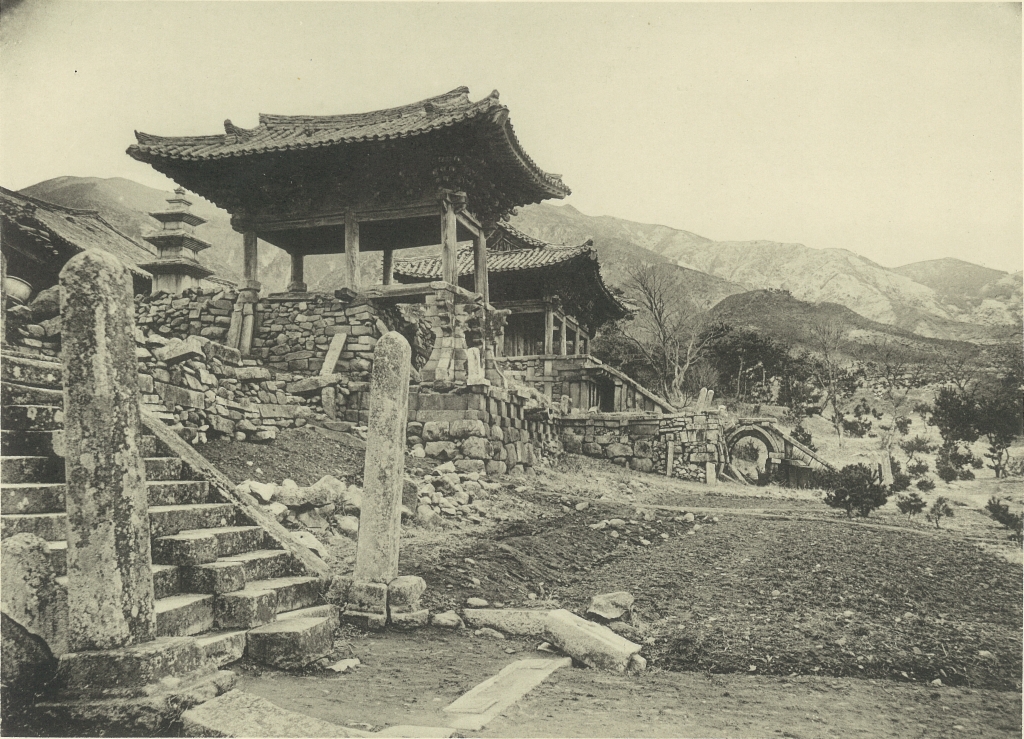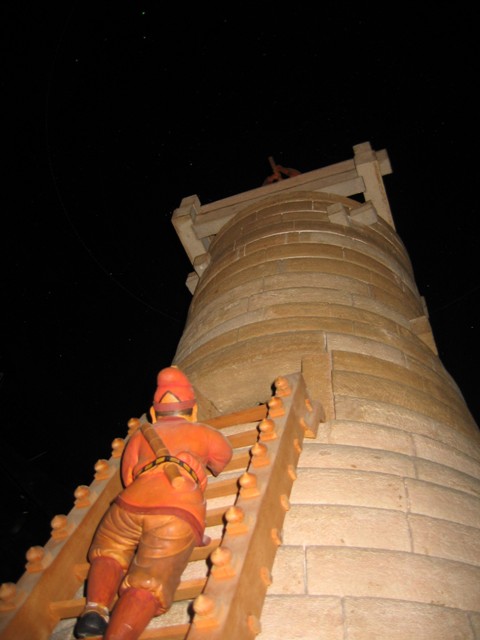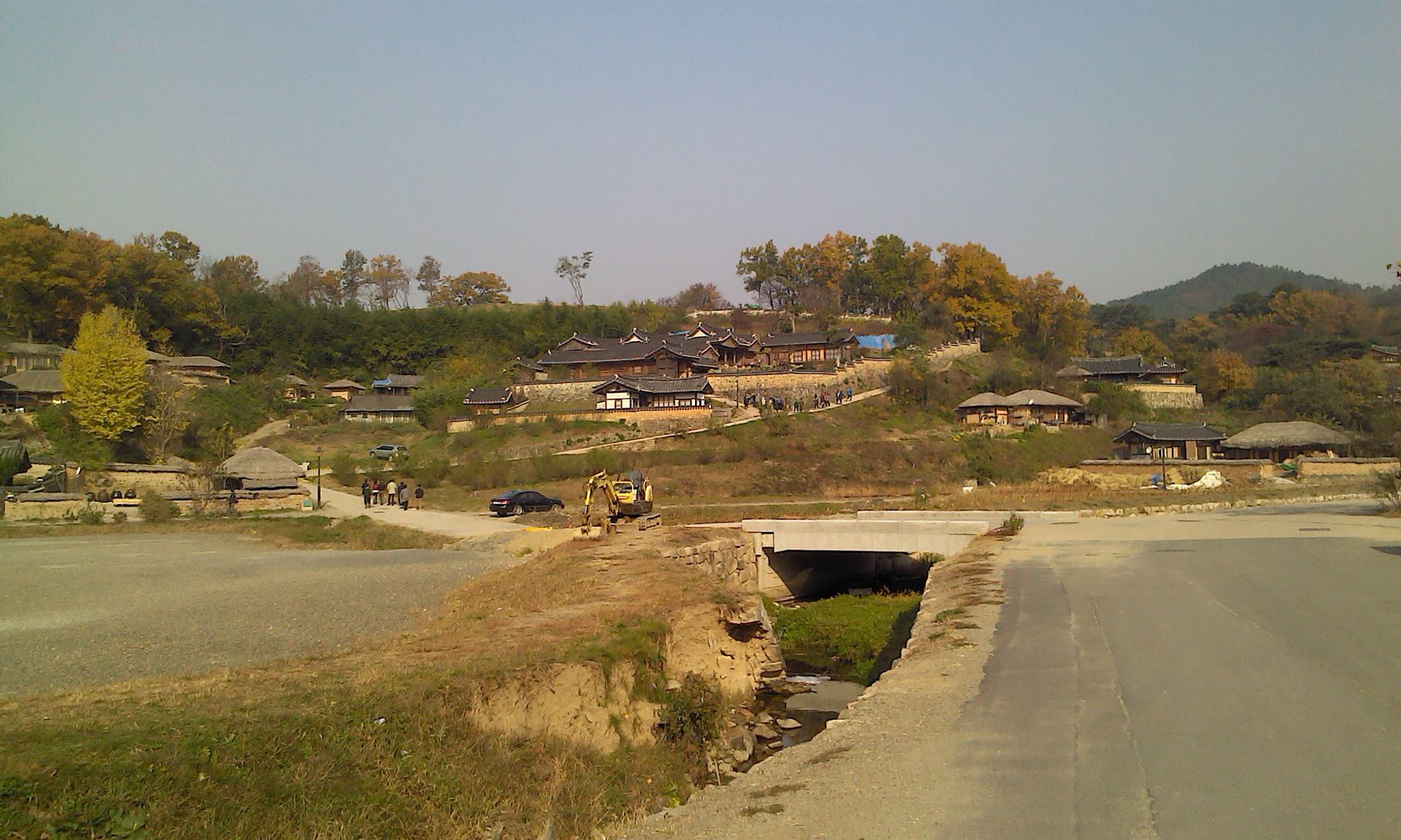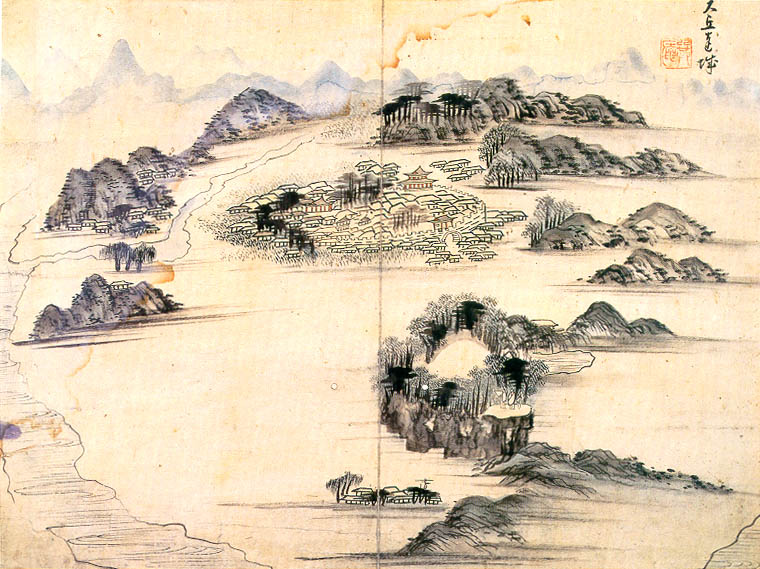|
Gyeongju
Gyeongju (, ), historically known as Seorabeol (, ), is a coastal city in the far southeastern corner of North Gyeongsang Province, South Korea. It is the second largest city by area in the province after Andong, covering with a population of 264,091 people . Gyeongju is southeast of Seoul, and east of Daegu. The city borders Cheongdo and Yeongcheon to the west, Ulsan to the south and Pohang to the north, while to the east lies the coast of the Sea of Japan. Numerous low mountains—outliers of the Taebaek Mountains, Taebaek range—are scattered around the city. Gyeongju was the capital of the ancient kingdom of Silla (57 BC – 935 AD), which ruled about two-thirds of the Korean peninsula at its height between the 7th and 9th centuries, for close to one thousand years. Later Silla was a prosperous and wealthy country, and Gyeongju was the fourth largest city in the world. A vast number of archaeological sites and cultural properties from this period remain in the city. Gye ... [...More Info...] [...Related Items...] OR: [Wikipedia] [Google] [Baidu] |
Donggung Palace And Wolji Pond
Donggung Palace and Wolji Pond () are a Silla-era former palace and artificial pond in Gyeongju, South Korea. They were part of the palace complex of ancient Silla (57 BCE – 935 CE). It was constructed by order of King Munmu in 674 CE. The pond was formerly known as Anapji () and is situated at the northeast edge of the Wolseong Palace, in central Gyeongju. The pond is an oval shape; 200m from east to west and 180m from north to south. It contains three small islands. History Anapji was originally located near the palace of Silla called Banwolseong. It is written in Samguk Sagi: "During the era of King Munmu, a new pond was made in the palace and flowers and birds flourished in this pond". There is also mention of a royal reception held by King Gyeongsun in 931, when Silla was already crumbling. After the fall of Silla, the pond fell into disrepair for many centuries. The name ''Anapji'' appears in the 16th century Joseon era document '' Augmented Survey of the Geography of ... [...More Info...] [...Related Items...] OR: [Wikipedia] [Google] [Baidu] |
Silla
Silla (; Old Korean: wikt:徐羅伐#Old Korean, 徐羅伐, Yale romanization of Korean, Yale: Syerapel, Revised Romanization of Korean, RR: ''Seorabeol''; International Phonetic Alphabet, IPA: ) was a Korean kingdom that existed between 57 BCE – 935 CE and was located on the southern and central parts of the Korea, Korean Peninsula. Silla, along with Paekje and Koguryeo, formed the Three Kingdoms of Korea. Silla had the lowest population of the three, approximately 850,000 people (170,000 households), significantly smaller than those of Paekje (3,800,000 people) and Koguryeo (3,500,000 people). Its foundation can be traced back to the semi-mythological figure of Hyeokgeose of Silla (Old Korean: *pulkunae, "light of the world"), of the Park (Korean surname), Park clan. The country was first ruled intermittently by the Miryang Park clan for 232 years and the Seok (Korean surname)#Wolseong, Wolseong Seok clan for 172 years and beginning with the reign of Michu of Silla, Mi ... [...More Info...] [...Related Items...] OR: [Wikipedia] [Google] [Baidu] |
Bulguksa
Bulguksa () is a Buddhist temple on Tohamsan, in Jinhyeon-dong, Gyeongju, North Gyeongsang Province, South Korea. It is a head temple of the Jogye Order of Korean Buddhism and contains six National Treasures, including the Dabotap and Seokgatap stone pagodas, Cheongun-gyo (Blue Cloud Bridge), and two gilt-bronze statues of Buddha. The temple is classified as ''Historic and Scenic Site No. 1'' by the South Korean government. In 1995, Bulguksa and the nearby Seokguram Grotto were added to the UNESCO World Heritage List. The temple is considered as a masterpiece of the golden age of Buddhist art in the Silla kingdom. It is currently the head temple of the 11th district of the Jogye Order of Korean Buddhism. Among the earliest woodblock prints in the world, a version of the Dharani sutra dated between 704 and 751 was found there in 1966. Its Buddhist text was printed on a mulberry paper scroll. History The temple's records state that a small temple was built on this site unde ... [...More Info...] [...Related Items...] OR: [Wikipedia] [Google] [Baidu] |
Gyeongju Historic Areas
Gyeongju Historic Areas () is a World Heritage Site in Gyeongju, South Korea that was designated by UNESCO in 2000. The protected areas encompass the ruins of temples and palaces, outdoor pagodas and statuary, and other cultural artifacts left by the Koreanic kingdom Silla (57 BC – 935 AD). Description The item is organized into five subregions that each contain a number of attractions. Mount Namsan Belt The Mount Namsan Belt is based around the holy mountain Namsan, in the north of Gyeongju. The mountain itself is considered a large open-air museum because of the ancient art and artifacts on display in the open. The area includes numerous Buddhist art and artifacts, as well as the ruins of 122 temples, 53 stone statues, 64 stone pagodas, and 16 stone lanterns. Other notable sites include the Namsan Mountain Fortress (built in 591 CE), the Poseokjeong Pavilion site (famous for its abalone-shaped watercourse), and the Seochulji Pond. Wolseong Belt The Wolseong Belt is based a ... [...More Info...] [...Related Items...] OR: [Wikipedia] [Google] [Baidu] |
North Gyeongsang Province
North Gyeongsang Province (, ) is a province in eastern South Korea, and with an area of , it is the largest province in the Korean peninsula. The province was formed in 1896 from the northern half of the former Gyeongsang province, and remained a province of Korea (as Keishōhoku-dō during Japanese rule) until the country's division in 1945, then became part of South Korea. Daegu was the capital of North Gyeongsang Province between 1896 and 1981, but has not been a part of the province since 1981. In 2016, the provincial capital moved from Daegu to Andong. History The 1,000-year-old Silla Kingdom flourished and unified the previous three kingdoms. The area was named Gyeongsang-do in 1314 during the Goryeo Dynasty. In 1896, during the Joseon Dynasty, the area was renamed Gyeongsangbuk-do as 13 roads were reorganized. The current administrative district was reorganized with the reorganization of Bu, Gun, and Myeon in 1914. Geography and climate The province is part of the ... [...More Info...] [...Related Items...] OR: [Wikipedia] [Google] [Baidu] |
Cheomseongdae
Cheomseongdae () is an astronomical observatory in Gyeongju, South Korea. Cheomseongdae is the oldest surviving astronomical observatory in Asia, and possibly even the world. It was constructed during the Silla period, during the reign of Queen Seondeok (r. 632–647 AD). Cheomseongdae was designated as the country's 31st national treasure on December 20, 1962. It is part of Gyeongju Historic Areas, a UNESCO World Heritage Site. Structure Cheomseongdae stands 9.17 meters high and consists of three parts: a stylobate, or base upon which a column is constructed, a curved cylindrical body, and a square top. Midway up the body stands a square window and entrance to the inside of the structure. When viewed from above, Cheomseongdae resembles the Korean Hanja character (Hangul: ), meaning "well." The square stylobate base is 5.7 meters wide and built from a single layer of 12 rectangular stones. From the base to the window, the tower is filled with earth and rubble. The cylind ... [...More Info...] [...Related Items...] OR: [Wikipedia] [Google] [Baidu] |
Bell Of King Seongdeok
The Sacred Bell of Great King Seongdeok () is the largest extant bronze bell in Korea. It is also known as the Emille Bell (), after a legend about its casting, and as the Bell of Bongdeoksa, where it was first housed. The bell was also previously housed at Gyeongjueupseong. The bell was commissioned by King Gyeongdeok to honor his father, King Seongdeok. However, King Gyeongdeok never lived to see the casting of the bell, as he died in 765 A.D. The bell was finally cast in 771 A.D., during the reign of Gyeongdeok's son, King Hyegong. Now housed in the Gyeongju National Museum, the bell was designated as the 29th national treasure of Korea on December 12, 1962. It measures high, in diameter at the lip, and in wall thickness. The Gyeongju National Museum weighed it in 1997, and found that its weight was 18.9 tons. Artistic characteristics The bell is considered a masterpiece of Unified Silla art. It is unique among Korean bronze bells because of the presence of delicate ... [...More Info...] [...Related Items...] OR: [Wikipedia] [Google] [Baidu] |
Yangdong Folk Village
Yangdong Folk Village () is a traditional ''yangban'' (upper class) Korean folk village that dates to the Joseon period. The village is located in Gangdong-myeon, sixteen kilometers northeast of Gyeongju, South Korea, along the Hyeongsan River. Mt. Seolchang stands to the north of the village. The village is designated as Important Folklore Materials No. 189 by the South Korean government. The size, degree of preservation, numerous cultural assets, traditionalism, beautiful natural setting all contribute to the importance of Yangdong Village. It is also a fine example of the yangban (Korean aristocracy) lifestyle and Neo-Confucian traditions. The village is listed by the South Korean government with UNESCO as a World Heritage Site with Hahoe Folk Village in 2010. Overview The village was founded by Son So (孫昭 1433–1484). The household of the Wolseong Son clan was placed on an auspicious site according to Korean theories of ''pungsu'' (geomancy). Son So and his wife, th ... [...More Info...] [...Related Items...] OR: [Wikipedia] [Google] [Baidu] |
Seokguram
Seokguram () is a hermitage and part of the Bulguksa temple complex in Gyeongju, South Korea. It and Bulguksa are both on the mountain Tohamsan, although the two are separated by distance of around . The grotto overlooks the East Sea and rests 750 meters above sea level. In 1962, it was designated the 24th National Treasure of South Korea. In 1995, Seokguram was added to the UNESCO World Heritage List together with the Bulguksa Temple. It exemplifies some of the best Buddhist sculptures in the world. The Seokguram Grotto is said to have been built by Kim Daeseong and originally called Seokbulsa (). Construction began in either 742 or 751, during the cultural peak of the kingdom Unified Silla. The grotto was completed by the Silla court in 774, shortly after Kim's death. The grotto is currently one of the best known cultural destinations in South Korea. A viewing of the sunrise over the sea, which is visible from near the seated Buddha's perch, is especially popular. Archit ... [...More Info...] [...Related Items...] OR: [Wikipedia] [Google] [Baidu] |
Daegu
Daegu (; ), formerly spelled Taegu and officially Daegu Metropolitan City (), is a city in southeastern South Korea. It is the third-largest urban agglomeration in South Korea after Seoul and Busan; the fourth-largest List of provincial-level cities of South Korea, metropolitan city in the nation with over 2.3 million residents; and the second-largest city after Busan in the Yeongnam Regions of Korea, region in southeastern South Korea. Daegu and the surrounding North Gyeongsang Province are often referred to as Daegu-Gyeongbuk, with a total population of over 5 million. Daegu is located in south-eastern Korea about from the coast, near the Geumho River and its mainstream, Nakdong River in Gyeongsang Province. The Daegu basin is the central plain of the Yeongnam List of regions of Korea, region. In ancient times, the Daegu area was part of the proto-kingdom Jinhan. Subsequently, Daegu came under the control of the Silla Kingdom, which unified the Korean Peninsula. During th ... [...More Info...] [...Related Items...] OR: [Wikipedia] [Google] [Baidu] |
Later Silla
Unified Silla, or Late Silla, is the name often applied to the historical period of the Korean kingdom of Silla after its conquest of Goguryeo in 668 AD, which marked the end of the Three Kingdoms period. In the 7th century, a Silla–Tang alliance conquered Baekje in the Baekje–Tang War. Following the Goguryeo–Tang War and Silla–Tang War in the 7th century, Silla annexed the southern part of Goguryeo, unifying the central and southern regions of the Korean peninsula. Unified Silla existed during the Northern and Southern States period at a time when Balhae controlled the north of the peninsula. Unified Silla lasted for 267 years until it fell to Goryeo in 935 during the reign of King Gyeongsun. Terminology The people of the Unified Silla period considered themselves to be of a kingdom of unified Koreans, which they called "三韓一統", (Modern Hangul: , ) meaning the unity of three kingdoms (the three kingdoms being Silla, Goguryeo, and Baekje). The term was use ... [...More Info...] [...Related Items...] OR: [Wikipedia] [Google] [Baidu] |
Korea
Korea is a peninsular region in East Asia consisting of the Korean Peninsula, Jeju Island, and smaller islands. Since the end of World War II in 1945, it has been politically Division of Korea, divided at or near the 38th parallel north, 38th parallel between North Korea (Democratic People's Republic of Korea; DPRK) and South Korea (Republic of Korea; ROK). Both countries proclaimed independence in 1948, and the two countries fought the Korean War from 1950 to 1953. The region is bordered by China to the north and Russia to the northeast, across the Yalu River, Amnok (Yalu) and Tumen River, Duman (Tumen) rivers, and is separated from Japan to the southeast by the Korea Strait. Known human habitation of the Korean peninsula dates to 40,000 BC. The kingdom of Gojoseon, which according to tradition was founded in 2333 BC, fell to the Han dynasty in 108 BC. It was followed by the Three Kingdoms of Korea, Three Kingdoms period, in which Korea was divided into Goguryeo, Baekje, a ... [...More Info...] [...Related Items...] OR: [Wikipedia] [Google] [Baidu] |






